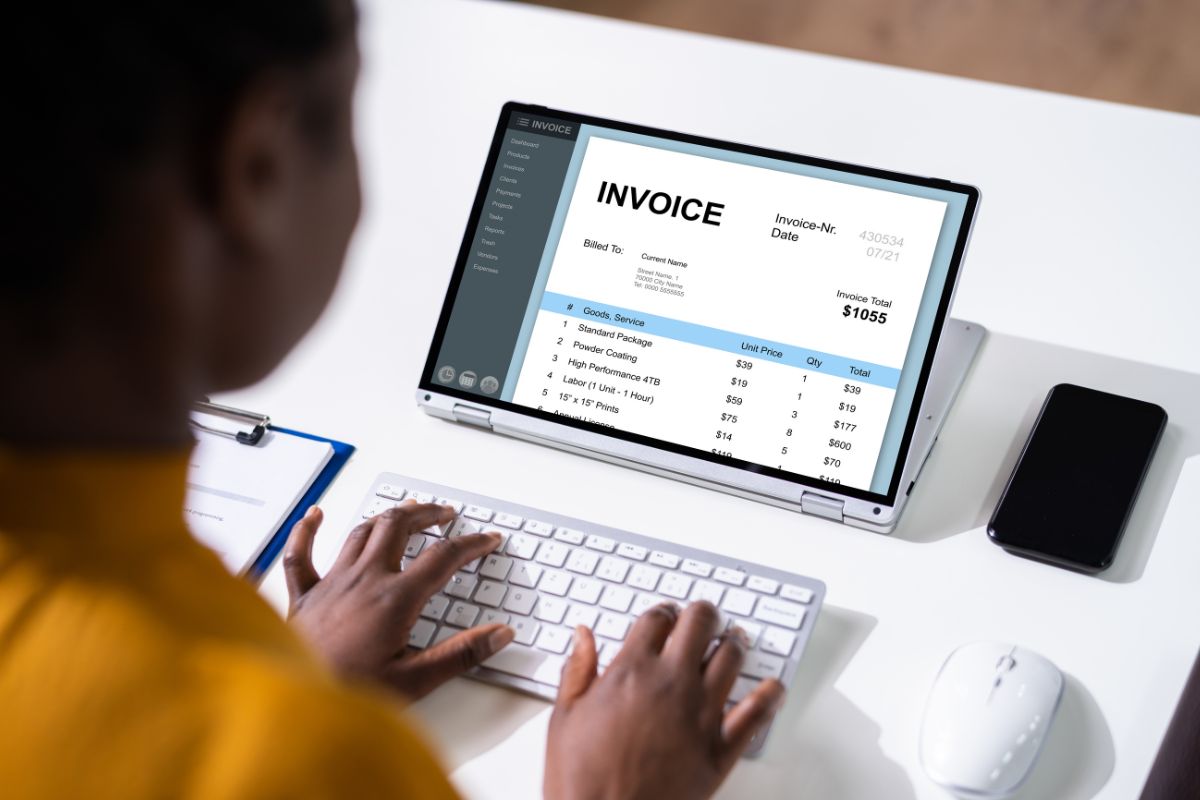While selling a large amount of products, a manufacturing company can be occupied with numerous invoices! And, surely, many companies might be facing issues with the cash flow. So, what’s the connection between invoices and cash flow? Well! It is important to know that if invoices are accurately sent on time, you get timely payments, thus, improving your cash flow. What can help you keep track of all invoices is invoice analytics. With invoice analytics on your side, you’ll be a financial pro in no time! So, what exactly is invoice analytics? Let’s break it down…
What is Invoice Analytics?
Invoice analytics is detailed valuable insights about all invoices sent and received. With invoice analytics, you can:
- Track and monitor your spending patterns.
- Identify discrepancies and errors in billing, if any.
- Identify areas for cost reduction or negotiation and optimize your cash flow.
- Forecast future expenses more accurately.
- Improve your relationships with clients.
- Ensure compliance with regulations and internal policies.
- Streamline your accounts payable processes for greater efficiency.
- Make better financial decisions to make your business flourish.
Key Components of Invoice Analytics
Understanding How Data is Collected and Analyzed:
- Invoice analytics involves gathering data from various sources, such as invoices, receipts, and purchase orders.
- It helps you analyze this data to uncover insights into your spending habits, identify trends, and detect anomalies.
Introduction to Tools and Technologies Used in Invoice Analytics:
- Invoice analytics utilizes advanced software and technologies to process and analyze large volumes of invoice data.
- Advanced software with fancy features like data visualization, predictive analytics, and machine learning algorithms can level up your insights.
- it is a prime example of invoice analytics done right. This nifty platform automates the whole invoicing process – from generating invoices to sending payment reminders to tracking expenses.
- It provides robust reporting and analytics features, allowing you to gain deep insights into your financial data and optimize your invoicing processes for better efficiency and accuracy.
Advantages of Manufacturing Invoice Analytics
The ability to capture, analyze, and act on key financial and operational metrics is critical for staying lean, agile, and competitive. One area ripe for analytics is invoice processing – monitoring invoice flows, spending patterns, approval cycles, and more can unlock powerful insights. Deploying manufacturing invoice analytics provides a wealth of advantages for optimizing processes and costs.
- Gain True Spend Visibility
How much are you really spending across all your manufacturing sites, vendors, and product lines? Invoice analytics illuminates true corporate spending by consolidating invoice data from across your enterprise into a centralized repository. This unified view allows you to analyze spend by supplier, part/service category, plant location, cost center, and other key dimensions. You can identify maverick spending, scrutinize outliers, negotiate better pricing, and drive sourcing optimizations.
- Improve Working Capital Management
Invoices directly impact working capital – the sooner you pay, the more cash you burn; the longer you delay, the more you starve suppliers. Invoice analytics helps strike the perfect balance by analyzing invoice approval flows, approval cycle times, early payment discounts captured, and more. You can pinpoint working capital leeches and tighten up processes while staying supplier-friendly. Invoice AI capabilities are especially beneficial for uncovering working capital optimization opportunities through automated invoice data mining.
- Strengthen Supplier Relationships
Supplier relationships are vital manufacturing assets – you need to collaborate seamlessly with your whole supply ecosystem. Invoice analytics monitors KPIs like on-time payment rates, discount realization, invoice exception rates, and more by supplier. This intelligence helps you identify and mitigate supplier risk while rewarding top performers. You’ll strengthen relationships that matter most.
- Boost AP Productivity and Controls
Processing thousands of invoices per month is an operational minefield for accounts payable teams – fraught with inefficiencies, errors, duplicates, and fraud risks. Invoice analytics brings spent processes under a quality microscope by measuring and monitoring metrics like:
- Cost per invoice
- Straight-through processing rates
- Exception volumes and root causes
- Invoice approval cycle times
- Duplicate payment identification
You can tackle productivity bottlenecks, reengineer broken processes, tighten up controls, and shift staff to more value-added work.
- Enhance Audit Readiness and Compliance
Manufacturing environments are rife with complex tax, regulatory, and compliance obligations around areas like sales/use tax, customs duties, cost-plus contracts, and more. Invoice analytics provides a comprehensive audit trail for all payment activities across divisions, entities, and geographies. Aufact data monitoring helps flag policy violations while spending taxonomies map to compliance requirements.
How-To Implement Manufacturing Invoice Analytics
Here’s a step-by-step guide to implementing manufacturing invoice analytics:
- Set clear goals, don’t get confused:
Let’s start with the first step – set clear goals. Before jumping in, decide what areas you want to improve with invoice analytics. Do you need better cost management? Want to optimize cash flow? Or maybe strengthen vendor relationships? Get specific so you can stay focused.
- Gather all useful data:
Next up is data gathering. Collect all the relevant documents – invoices, receipts, purchase orders, anything money-related. Organize this data neatly so it’s easy to analyze later on.
- Choose a popular analytics tool:
Now for the fun part – choosing your analytics tools! Look at different software options and pick one that fits your manufacturing needs perfectly. Invoice is one of the top choices of 4 Million+ users worldwide. Check for cool features like data visuals, predictive analytics, and machine learning smarts. Don’t forget to connect your new analytics tools with your existing systems and processes. You may need to work with your IT team or vendors to ensure everything integrates smoothly.
- Train your team:
It’s the training time! Make sure your team understands how to use the analytics tools effectively. They need to know how to access insights from the data. In-person sessions or online tutorials can help with this.
- Set Key Performance Indicators:
Set some key performance goals to track your progress, like cost savings targets or faster invoice processing times. Check-in on these metrics regularly to see how you’re doing.
- Protect your data:
Data security is super important, so lock it down tight! Use encryption, access controls, backups – whatever protects that valuable financial information best.
- Analyze your data:
With analytics running, continuously dig into invoice data for patterns, trends, and areas to improve. Apply those insights to refine processes and make smarter decisions. Don’t be afraid to adjust your approach as needed.
- Connect with your clients:
Don’t forget your clients! Share data-driven insights to negotiate better deals and build stronger partnerships.
- Analyze overall performance:
Finally, keep a close eye on your analytics performance. Make tweaks to keep it running smoothly. Stay up-to-date on the latest industry practices too. Follow these steps, and you’ll be an invoice analytics pro in no time! It’s a journey, but big rewards await those who master it.
Conclusion
At the end of the day, implementing manufacturing invoice analytics is a no-brainer for any company looking to get lean, competitive, and future-ready. The insights you can extract from your humble invoices are incredibly powerful – from pinpointing cost savings to optimizing working capital to strengthening supplier relationships. Invoice analytics can help in digital transformation across your entire manufacturing organization. You’ll make smarter decisions faster based on hard facts rather than gut instinct. With the right tools, training, and leadership support, you’ll be amazed at how these unassuming documents can drive manufacturing excellence. Your invoices hold the insights to take your operations to new heights of performance.












